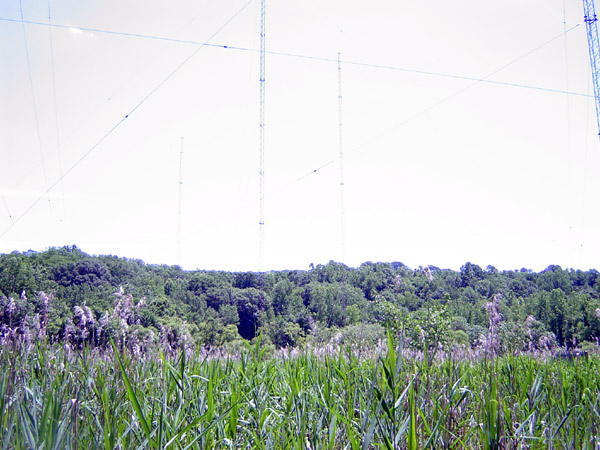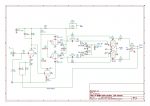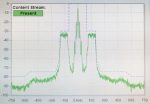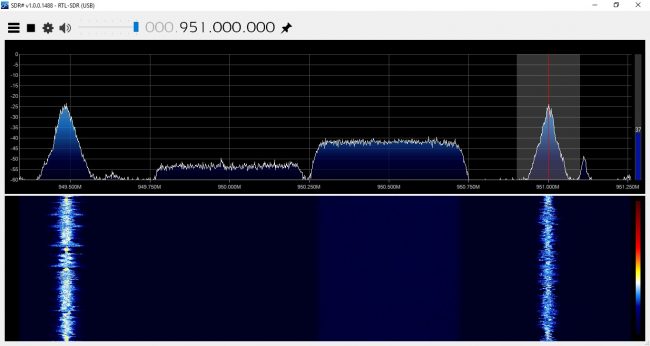One of the AM stations around here that I am familiar with is considering a downgrade, which is to say reduce power and get rid of a directional antenna system in favor of a non-DA antenna. In this particular case, it makes sense, as the station can co-locate with another AM that is closer to the COL by a good distance. The coverage from the new site at reduced power looks to be a good fit. If this can be arraigned, the AM station in question would lose a multi-tower AM antenna system that is 50 years old and all the attendant headaches, expenses, and labor that goes with it.

Many AM stations that are DA-2 or even DA should consider downgrading to a lower power level and getting rid of their DA system. Directional antenna systems on AM stations are maintenance nightmares. Unfortunately, in the ’50s, 60s, and 70s, it was often thought that adding power, and extra towers to an AM station would give them great swaths of extra coverage. Sometimes it worked out, sometimes it did not. Often what happened was some area was added, but in areas that were nulls toward protected stations, signal strengths went down. What the station ended up with was more towers, more maintenance, monitor points, a sample system, and more expense.
Taking an AM station in the other direction might actually make more sense. Go back to one tower non-directional 1 KW or whatever power can be used in the daytime. Time was when the FCC would only allow certain power levels; .5, 1, 5, 10, and 50 KW. Those were what a new station had to work with. No longer is that the case, any power level can be used so long as it meets interference contours and the city of license contour coverage requirements.
Presunrise authority is normally 500 watts and is available at 6 am, post-sunset authority varies but often a PSA extends the on-air time to 9 pm in the wintertime. For a local radio station, which is what all but the class A AM stations are destined to become, this will be adequate. For a losing station, it may be that, or turn in the license and sell the land to a developer.
Diplexing on another AM station’s tower closer to town is also a good way to get out of maintaining an expensive antenna array with diminishing income.
Something to think about.






Most of the directional antenna systems were engineered and installed to enhance a station’s “bragging rights” with more watts on their rate card. There are times when directional antennas are warranted and necessary especially in the case of coastal stations or near International borders. I have been skeptical of inland stations installing directional antennas merely to increase power for their advertising rate cards. A station I know very well is approximately 30 miles away and went on the air in the late ’50’s with a single 1/3 wave tower (120 degrees) and a new BC-1T. For years it did well into Milwaukee. Then, they just had to increase their power to a whopping 2.5 kW and had their consultant design a 3 tower in-line array aimed north. They lost Milwaukee almost entirely and what did they gain? The gains were in the form of expenses that more than doubled their electric bill, and coverage over an extensive rural area with a lot of cows. This is not to mention monitor point readings, base current readings, and associated maintenance of the additional towers, and lighting. In today’s AM climate they probably would have been better off to keep their original setup.
That is exactly the point, these stations don’t need to be upgraded, they need to be down graded and moved closer to the population centers. Remember when a 250 or 500 watt class C station on the roof of a down town hotel or something covered the population center just fine? That is what is needed. Those out in the suburbs aren’t listening to AM radio anyway. Cover the COL.
In another instance, we are investigating turning an AM station back into a daytimer. They have a 420 watt night time signal that no one can hear, it wastes more money lighting the night towers than they make in a month. Daytime signal is just fine with a 500 watt pre-sunrise and a 320 watt post sunset.
Turning an unlimited station into a daytime only station may be risky and a death warrant. You would lose too much with the FCC, and some other idiot might grab more of you nighttime contour and hem the station in further. I would keep the unlimited status and possibly look for a better channel (preferably close by) that would work. I’m not at all familiar with the current Commission’s policy on expanded band, but that may be a possibility for a move. This would give omni coverage with a good daytime contour and a reasonable one at night. From what I observe, the expanded band is pretty sparse. It always appears to me that government always goes extreme one way or the other, never a reasonable middle road. 1610 is one frequency that has been jammed with TIS stations that are “secondary” according to the Rules, yet the Commission doesn’t want to disturb them if a regular licensed station wanted to bump a TIS off. These days, I have a hard time figuring the FCC out. There are way too many lawyers who have little knowledge of broadcasting technical topics and the business in general that happen to be the power elite governing this agency. Steve Wynn has said it best, “It’s got to change”!
It makes great sense to consider multiplexing two or more stations on one tower, or even a directional array. Not only does it save tower maintenance costs, but frees up real estate. Often, the real estate occupied by an AM array is worth much more than the station!
Many of the station that diplex or triplex use systems from LBA Technology, a leading US manufacturer of multiplexing systems. LBA has supplied systems all the way from 250 watts to the barnburner 600,000 watt AM systems used overseas! Check them out at http://www.lbagroup.com/technology/index.php.